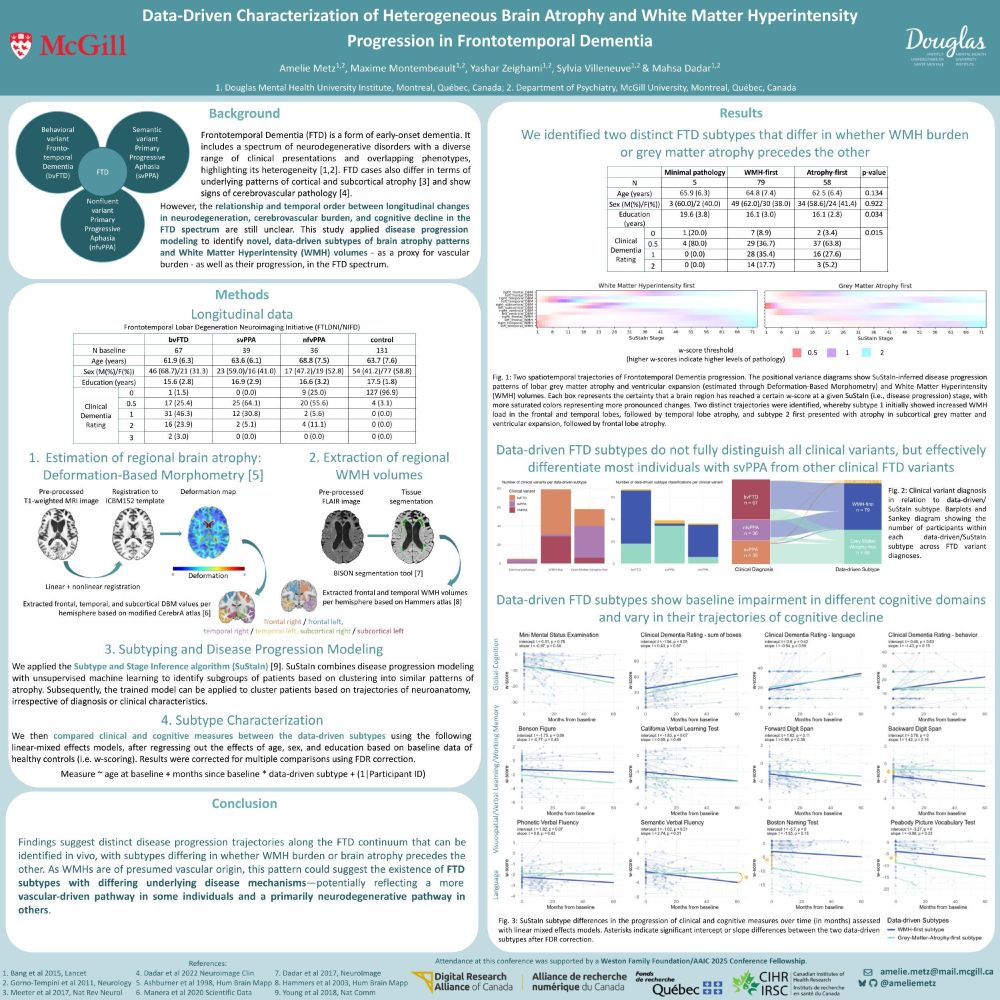
Data-Driven Characterization of Heterogeneous Brain Atrophy and White Matter Hyperintensity Progression in FTD (Amelie Metz @ameliemetz.bsky.social )
Tuesday, July 29

Data-Driven Characterization of Heterogeneous Brain Atrophy and White Matter Hyperintensity Progression in FTD (Amelie Metz @ameliemetz.bsky.social )
Tuesday, July 29
and Simon Ducharme) for the ideas, feedback, and encouragement that made this possible!
Make sure to check out the full paper 😄
and Simon Ducharme) for the ideas, feedback, and encouragement that made this possible!
Make sure to check out the full paper 😄
🧠We can use the mapping between neurodegeneration and cognitive manifestations of the core FTD subtypes for phenotyping patients according to clinical variants.
🧠The inclusion of DBM measures adds to the classification precision in the absence of extensive clinical testing.
🧠We can use the mapping between neurodegeneration and cognitive manifestations of the core FTD subtypes for phenotyping patients according to clinical variants.
🧠The inclusion of DBM measures adds to the classification precision in the absence of extensive clinical testing.





